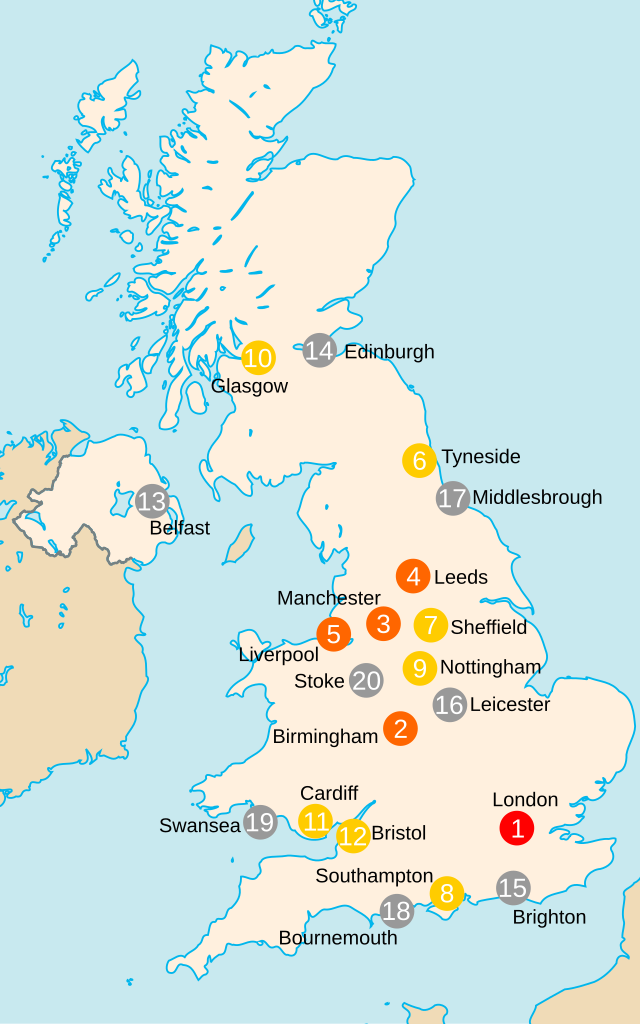Top Qs
Timeline
Chat
Perspective
ESPON metropolitan areas in the United Kingdom
From Wikipedia, the free encyclopedia
Remove ads
Remove ads
A 2001 ESPON metropolitan area was defined as consisting of an urban area, conurbation or agglomeration, together with the surrounding area to which it was closely economically and socially integrated through commuting.

The European Union's ESPON (European Spatial Planning Observation Network) project defined a harmonised series of metropolitan areas across Europe, made up of two components: Morphological Urban Areas (MUAs), which were similar to urban areas that form the densely populated urban cores of metropolitan areas, and Functional Urban Areas (FUAs), which form the labour basin surrounding Morphological Urban Areas.[1]
Morphological Urban Areas were calculated by combining contiguous local administrative units with population densities greater than 650 inhabitants per square kilometre, with Functional Urban Areas then being calculated by combining surrounding local administrative units where 10% or more of the workforce works within the core Morphological Urban Area.[2]
According to the harmonised European definition, there were eighteen metropolitan areas in the United Kingdom with populations of more than 500,000 at the time of the 2001 census.
This article lists the UK metropolitan areas defined by ESPON, which excluded combined conurbations such as the Liverpool-Manchester megalopolis, which (in 2001) had a combined population of 5.6 million.[3] It also excluded city regions such as those formed in Greater Manchester, Leeds, Liverpool and Sheffield, which are typically areas now covered by combined authorities.
Remove ads
Summary
In 2001, there were 46 metropolitan areas in the United Kingdom with a populations in the range 150,000 to 25 million inhabitants, according to the ESPON project, with the following population distribution:
Source[citation needed]
Remove ads
By population (2001 data)
Summarize
Perspective
Source[4]
Remove ads
By region (2001 data)
See also
- List of metropolitan economies in the United Kingdom
- Core Cities Group
- Combined authority
- List of towns and cities in England by population
- List of urban areas in the United Kingdom
- Metropolitan and non-metropolitan counties of England
- Travel to work area
- List of metropolitan areas in Europe by population
- List of metropolitan areas by population for the world
- Larger urban zone
References
Wikiwand - on
Seamless Wikipedia browsing. On steroids.
Remove ads
